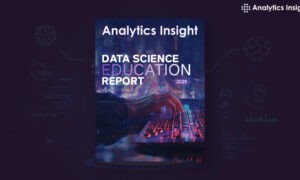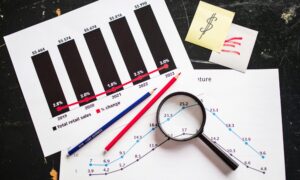What Are Examples of Big Data?
To provide a comprehensive understanding of big data, we reached out to 15 industry experts, including CEOs, founders, and marketing managers. From the paid ads in marketing campaigns to analyzing social media stats, these professionals share their insights on various examples of big data in today’s world.
- Paid Ads and Marketing Campaigns
- HD Live Map: Location Data
- Big Data from Web Servers
- Customer Behavior Analysis
- Website Analytics and Log Data
- FourKites: Real-Time Package Tracking
- Sparx: Personalized Learning
- Amazon: Data-Driven Decisions
- Sports Data and Performance
- Education Data and Outcomes
- Wildlife Conservation Analytics
- Salesforce: Data Cohesiveness
- IoT: Product Insights
- Weather.com: AI Forecasting
- Social Media Data Analysis
Paid Ads and Marketing Campaigns
Paid ads are a great example of big data. With any marketing campaign, businesses may target consumers with paid advertising banners to understand their shopping habits. What sites are they viewing where the ad is received, and what is the click rate?
These metrics allow businesses to alter their marketing strategies to better engage with the target audience.
Christy Pyrz, Chief Marketing Officer, Paradigm Peptides
HD Live Map: Location Data
HERE Technologies specialists use location data in a variety of ways, most notably in the HD Live Map, which provides layered, location-specific data to self-driving cars.
The map detects lane borders and a vehicle’s surroundings. The map can see around corners in ways that the human eye cannot because of data from sophisticated sensors. A constant flow of data from fleets of roving vehicles also helps the map alert drivers about lane closures miles away.
Jeff Romero, Founder, Octiv Digital
Big Data from Web Servers
An example of big data is the data collected from a variety of sources, such as web servers, social media feeds, sensors, and other devices. It comprises large volumes of structured and unstructured data, which can gain insights and make smarter decisions.
Big data is often analyzed using advanced technologies such as machine learning and artificial intelligence, which can uncover hidden patterns and trends.
Benjamin Okyere, Founder and CTO, Otto’s Journal
Customer Behavior Analysis
Big data helps companies analyze customer behavior and preferences, allowing them to offer personalized marketing that increases customer engagement.
With big data, companies can enhance customer experiences, improve customer retention, increase sales, and identify high-value customers. Ultimately, big data can provide essential insight into who your customers are, what they want, where they are, and even how they prefer to be contacted and when.
Andrew Chen, Chief Product Officer, Videeo
Website Analytics and Log Data
Big data refers to the massive quantities of both structured and unstructured data that businesses deal with daily. It’s not simply the size or variety of data that matters, but what an organization does with it. Companies can gain insight into their operations by analyzing large volumes of information.
An example of big data is website analytics data. For example, an online retailer might track the number of visitors to its website daily, what pages visitors view, and how long they stay on each page, which can contribute to a merchant’s decisions about what features and services to add.
We also consider log data as big data in SaaS (Software as a Service) businesses. This is because logs keep track of events that happen during software or hardware operation, such as when its components start and stop running or what kind of errors are encountered. By analyzing this data, companies can identify problems and opportunities for improvement in their services.
Boris Jabes, CEO, Census
FourKites: Real-Time Package Tracking
FourKites’ platform tracks packages in real-time, whether they’re traversing oceans or going by rail, using GPS and a variety of other location data sources.
A predictive system then considers data on traffic, weather, and other external factors to compute projected delivery times for parcels, allowing FourKites clients to provide customers with advance notice of delays and early deliveries—all while avoiding penalties.
Ben Flynn, Marketing Manager, Manhattan Tech Support
Sparx: Personalized Learning
One of the best examples of big data is Sparx’s usage of AI to improve student learning. The company, which provides math solutions to schools in the UK and International School Groups globally, uses machine learning to create personalized content to enhance the learning experience.
The app has over 32,000 questions and uses data analytics and an adaptive algorithm to determine how well they understand the topics and personalize homework for every student based on their previous answers.
The technology also provides real-time feedback, allowing students to solve any mistakes as soon as they happen. In addition, Sparx can gain insight into the learning patterns and challenges faced by students by collecting data from different students and schools. This enables them to improve their app.
Young Pham, Founder and Project Manager, Biz Report
Amazon: Data-Driven Decisions
Amazon is a great example of big data. Every time someone makes a purchase or visits Amazon’s website, their interactions are recorded and used to create data sets that can be analyzed to better understand customer behavior, preferences, and interests. This data helps Amazon make decisions about pricing, product selection, marketing campaigns, and more.
Gabriel Bogner, Co-founder, Mate Fertility
Sports Data and Performance
Sports generate a large amount of data from game statistics, player performance, and fan engagement. This data can improve player performance, develop new strategies, and enhance the fan experience.
Big data analytics can help sports teams and leagues analyze large amounts of data to identify patterns and trends in player behavior, game outcomes, and fan preferences.
Nilesh Rakholia, Director, Abelini
Education Data and Outcomes
Educational institutions generate a large amount of data from student records, teacher evaluations, and learning management systems.
This data can improve student outcomes, develop new teaching strategies, and enhance educational programs. Big data analytics can help educational institutions analyze large amounts of data to identify patterns and trends in student performance, teaching effectiveness, and curriculum design.
Daniel Close, CEO and Founder, We Buy Houses in Kentucky
Wildlife Conservation Analytics
As someone who has always been fascinated with wildlife around the world, I believe that wildlife conservation analytics is one of the most compelling examples of big data. The sheer volume of information that this field collects and analyzes is astounding, encompassing everything from population numbers and migratory paths to DNA sequencing and habitat analysis.
Through integrating advanced technology like drones and satellites, we can now track and observe animals in ways that were once unimaginable. By using this data to inform our conservation efforts, we make a tangible difference in the lives of countless species and ecosystems.
To me, that is the true power of big data—not just in the abstract, but in the real-world impact it can have on our planet and its inhabitants.
Derek Bruce, First Aid Training Director, Skills Training Group
Salesforce: Data Cohesiveness
Companies frequently disperse their data over multiple platforms, but Salesforce is all about cohesiveness. Their customer relationship management technology combines data from multiple aspects of a company, such as marketing, sales, and services, into a comprehensive, single-screen perspective.
Analytics on the platform enables automatic AI-informed insights and predictions on KPIs, such as revenue and customer turnover. Users can also connect Salesforce to external data management applications instead of switching between numerous windows.
Kim Leary, Creative Director, squibble
IoT: Product Insights
The Internet of Things generates vast data through connected devices, vehicles, appliances, and physical objects. While this data is very valuable for business insights, its volume and velocity can be overwhelming. Big data analytics processes and analyzes this data using advanced technologies like AI and machine learning to identify patterns and insights that would be impossible for us to detect.
IoT data enables enterprises to gain insights into how their products and services are used and how they can be improved, allowing them to provide better customer experiences. For instance, an automotive manufacturer can use IoT sensors to collect data on vehicle usage patterns and identify potential areas for improvement in safety and performance. Similarly, retailers can use data from IoT sensors to optimize store layouts, track inventory, and enhance the customer experience.
Guna Kakulapati, Co-founder and CEO, CureSkin
Weather.com: AI Forecasting
An example of big data is the massive amount of meteorological and climate data collected, processed, and analyzed by Weather.com.
This data includes historical and real-time information about temperature, humidity, wind speed, precipitation, and other atmospheric conditions from various sources such as weather stations, satellites, and weather models. IBM uses AI to process and analyze vast amounts of weather data to generate more accurate and reliable forecasts – key for consumers and many industries.
Jeremy Reis, Founder, Million Tips
Social Media Data Analysis
One example of big data to consider is the massive amount of information social media platforms generate. Social media platforms like Facebook and Twitter beget vast swathes of data on user behavior, such as likes, shares, comments, and click-through rates.
Brands can use this data to gain insights into consumer preferences and behavior, allowing them to target their marketing efforts more efficiently and improve their products to be more customer-informed. Social media data can be analyzed using machine learning and artificial intelligence algorithms to identify patterns and trends that are difficult or impossible to detect manually.
Michael Green, Co-founder, Winona
Related Articles



































